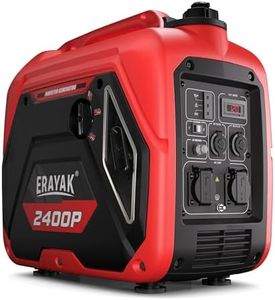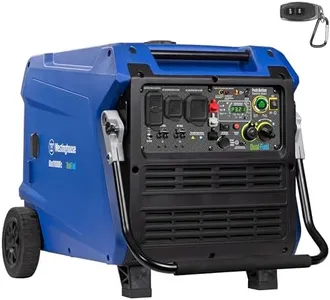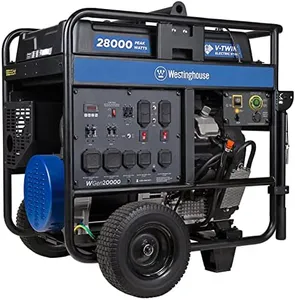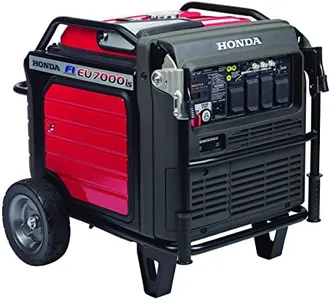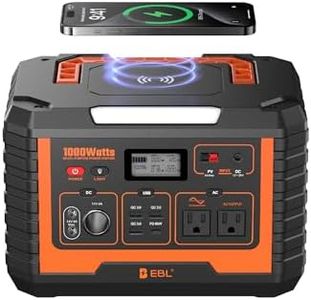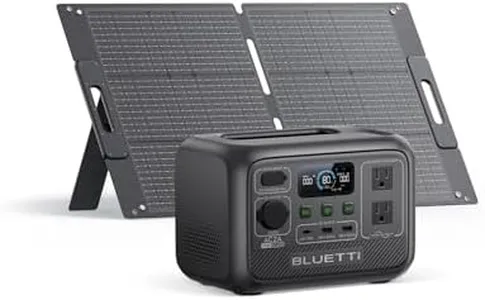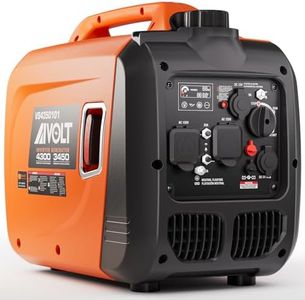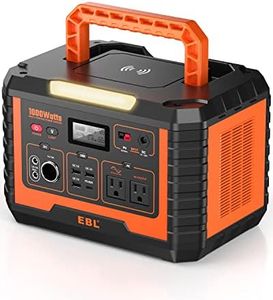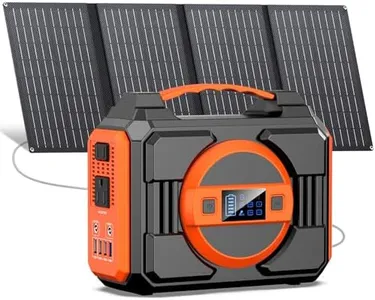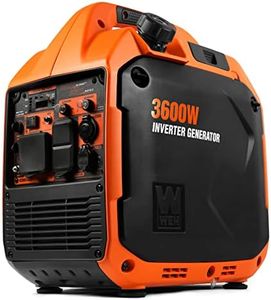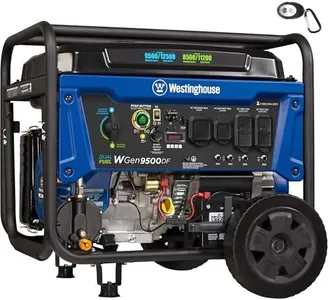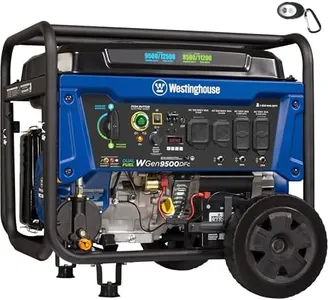10 Best Generators 2025 in the United States
Our technology thoroughly searches through the online shopping world, reviewing hundreds of sites. We then process and analyze this information, updating in real-time to bring you the latest top-rated products. This way, you always get the best and most current options available.

Our Top Picks
Winner
Westinghouse 11000 Peak Watt Dual Fuel Portable Inverter Generator, Remote Electric Start, Transfer Switch Ready, Gas and Propane Powered, Low THD - Safe for Electronics, Parallel Capable, CO Sensor
Most important from
1124 reviews
The Westinghouse 11000 Peak Watt Dual Fuel Portable Inverter Generator is a versatile and powerful choice for residential backup power. It provides a significant power output with 9000 running watts and 11000 peak watts on gasoline, and 8100 running watts with 10000 peak watts on propane. This dual fuel capability offers flexibility depending on fuel availability. The generator is equipped with a 9.8-gallon fuel tank that supports up to 17 hours of run time, making it suitable for extended power outages.
Portability may be a concern for some users as it weighs 187.4 pounds, making it quite heavy to move around without assistance. It comes with a convenient remote electric start, push button, and recoil start options for ease of use. The inverter technology ensures clean power, safe for sensitive electronics. The generator is also CO sensor equipped for added safety. The included components such as oil, oil funnel, remote, and tool kit make it a plug-and-play option right out of the box with minimal assembly required.
The LED data center provides valuable information such as fuel level, power output, and remaining run time, adding to its user-friendly features. Its size and weight could be drawbacks for users looking for a more portable solution. Additionally, while it is transfer switch ready, the high wattage output might be more than what some residential users need. Nevertheless, its robust power output, dual fuel flexibility, and user-friendly features make it a reliable choice for residential use.
Most important from
1124 reviews
Westinghouse 28000 Peak Watt Home Backup Portable Generator, Electric Start with Auto Choke, Transfer Switch Ready 30A & 50A Outlets, Gas Powered,Blue
Most important from
256 reviews
The Westinghouse 28000 Peak Watt Home Backup Portable Generator is a heavy-duty option designed for significant power needs, making it suitable for home backup during power outages. With 20,000 running watts and 28,000 peak watts, it offers substantial power, able to handle multiple appliances simultaneously.
Its gas-powered engine and a large 17.2-gallon fuel tank provide up to 17 hours of run time at 25% load, ensuring long-lasting operation during extended outages. The electric start with auto choke simplifies operation, and the generator is transfer switch ready, making it easy to integrate into your home's electrical system. Safety features like GFCI outlets and automatic low oil shutdown add to its reliability.
Its size and weight (583 pounds) make portability a challenge despite its reinforced steel handles. This generator is best suited for those needing high power output for residential backup and don't mind compromising on portability and noise.
Most important from
256 reviews
Honda EU7000IS 7,000 Watt Inverter Portable Backup Generator, Super Quiet, Electric Start
Most important from
24 reviews
The Honda EU7000IS is a powerful inverter generator that boasts a starting wattage of 7,000 watts and a running wattage of 5,500 watts, making it suitable for home backup power, RVs, and outdoor events. It runs on fuel and features a super quiet operation, which is great for residential areas or camping sites where noise can be a concern. The generator includes an electric start, which simplifies the startup process, and it also offers Bluetooth capability through the Honda My Generator app for remote monitoring and control. Additionally, it comes with an advanced CO-MINDER system to detect harmful carbon monoxide levels, enhancing safety.
One of its significant strengths is its fuel efficiency, providing a runtime of up to 6 hours and 30 minutes on a single tank. However, the generator is quite heavy at 270 pounds, which might affect its portability despite being labeled as portable. Users might find it challenging to move without assistance or additional equipment. The 3-year residential warranty is a reassuring feature, offering peace of mind with your purchase.
The noise level is exceptionally low for its power class, making it an excellent choice for noise-sensitive environments. Though it is a bit on the pricier side, its combination of power, efficiency, and advanced features makes it a worthy investment for those needing reliable backup power or portable energy solutions.
Most important from
24 reviews
Buying Guide for the Best Generators
Choosing the right generator can make it much easier to handle power outages, run equipment at job sites, or even enjoy comforts during camping trips. To find the best fit for your needs, it's important to understand the key specifications that affect how a generator will perform in different situations. Each user's main need—whether it's for emergency home backup, powering tools, or recreational use—should guide their decisions as they compare different options.FAQ
Most Popular Categories Right Now
